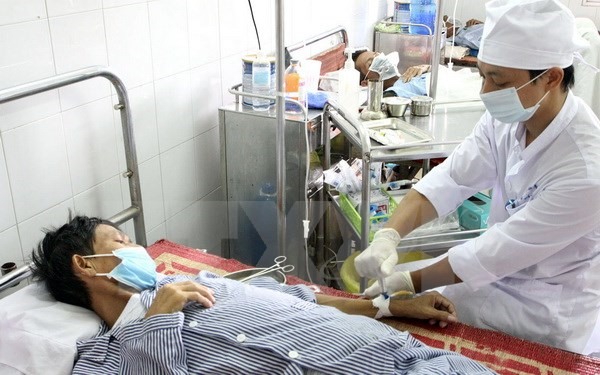 Society
Society

More than half of those living with HIV have access to treatment, while AIDS-related deaths have almost halved in the past 10 years in the world, a new report has stated.
 |
| A patient with HIV/AIDS is under treatment at the Việt Tiệp Hospital. – VNA/VNS Photo |
HÀ NỘI — More than half of those living with HIV have access to treatment, while AIDS-related deaths have almost halved in the past 10 years in the world, a new report has stated.
In Việt Nam, half of the people living with HIV were under treatment in 2016, and the estimated number of AIDS-related deaths was the lowest since 2004.
New HIV infections have also steadily decreased in recent years, it said.
The report, which has been launched by UNAIDS on Thursday, showed that in 2016, 19.5 million people living with HIV had access to treatment, and AIDS-related deaths had fallen from 1.9 million in 2005 to 1 million in 2016.
In Asia and the Pacific, more than two thirds of the people living with HIV were aware of their HIV status, a similar number of those who knew their HIV status were on treatment and four out of the five people under treatment had achieved viral suppression in 2016.
The wider availability of antiretroviral (ARV) treatment has led to nearly one third reduction in AIDS-related deaths since 2010 in the region. Việt Nam has significantly contributed to this progress.
“Việt Nam’s impressive scale-up of HIV services has resulted in a clear impact on the epidemic,” said Marie-Odile Emond, Country Director of UNAIDS Việt Nam.
New infections are declining, but not fast enough.
Global and Việt Nam’s progress against the 90–90–90 targets has been significant, but there is still more work to do.
The report shows that, globally, new HIV infections are declining, but not at enough pace to meet global targets by 2020. The situation in Việt Nam is similar.
New HIV infections in Việt Nam have decreased to about 11,000 in 2016 from about 28,000 during the peak years in the early 2000s.
However, greater scale-up of evidence-based prevention and more domestic resources for prevention, including needle, syringes and condoms, are needed to achieve the national targets on HIV prevention.
Integrated and community-based HIV services, as well as successful innovative and user-friendly approaches, are essential for greater HIV service access and uptake by key populations, and must be scaled up.
In Việt Nam, of the 70 per cent of people living with HIV who know their HIV status, one third is not on HIV treatment yet. Stigma and discrimination is still a major barrier in accessing HIV services and hampering the national response to HIV.
Globally, resources for AIDS response remain flat. In Việt Nam, the latest available data shows domestic resources accounted for nearly one third of the national AIDS spending in 2015, and it is increasing.
“Việt Nam continues to show great determination to sustain the response to HIV by increasing domestic financing for HIV through social health insurance and greater share in the financing responsibility by local governments,” Emond said.
“Investing sufficiently and wisely, now rather than later, and optimising all available financial and human resources at all levels will help Việt Nam avoid a complex and costly HIV response in the future, and end the AIDS epidemic by 2030.” — VNS




